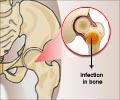A novel way to prevent bone loss during spaceflight has been found by researchers from University of Washington.
A novel way to prevent bone loss during spaceflight has been found by researchers from University of Washington.
Studies have shown that the absence of gravity is causing astronauts on the International Space Station to lose up to 10 times more bone mass in key regions of the body each month than most post-menopausal women do in the same period of time back here on Earth.While using bedrest as an analog of spaceflight, scientists could able to prevent bone loss in a specific region of the hip.
They are at the mid-point of a study in which 22 volunteers remain in bed, in a six-degree, head-down tilt position for 84 days.
The head-down tilt mimics many of the physiologic adaptations astronauts experience during spaceflight, such as bodily fluid shifts toward the head.
The bedrest confinement mimics the complete "unloading" of the musculoskeletal system that astronauts feel as they float through space due to the lack of gravity, which accelerates bone loss.
During the study, half of the participants are randomized to perform individually prescribed intermittent treadmill exercise similar to workouts by astronauts in space, but with one important difference. They were pulled towards the treadmill surface by a harness applying greater force than what was previously measured during walking and running.
Advertisement
"We have found that we can, on average, prevent bone loss in an important region of the hip with this intervention," said Dr. Peter Cavanagh, UW professor of orthopaedics and sports medicine, and principal investigator of the study.
Advertisement
"This study takes us another step closer to learning how to maintain bone health during and after these space missions," he added.
Source-ANI
ARU/L












